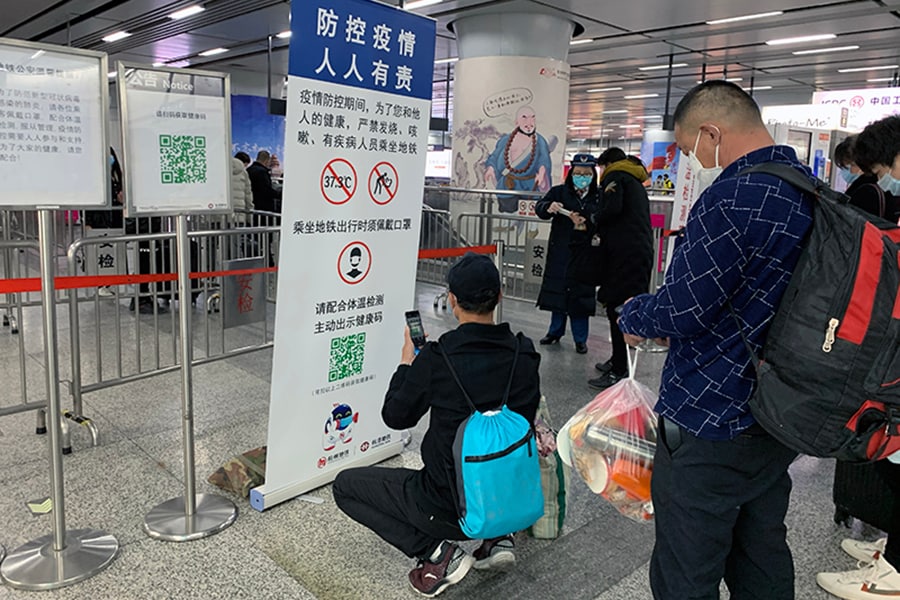
China's young struggle for jobs in the post-outbreak era
Relations with the United States are at their lowest point in decades and Hong Kong is seething with fear and anger, but China's biggest problem by far is getting its people back to work
 Health code instructions at a subway entrance in Hangzhou, China, on Feb. 26, 2020. At the height of China’s coronavirus outbreak, officials made quick use of the fancy tracking devices in everybody’s pockets — their smartphones — to identify and isolate people who might be spreading the illness
Health code instructions at a subway entrance in Hangzhou, China, on Feb. 26, 2020. At the height of China’s coronavirus outbreak, officials made quick use of the fancy tracking devices in everybody’s pockets — their smartphones — to identify and isolate people who might be spreading the illness
Image: Paul Mozur/The New York Times
Before China can fully recover from the devastation of the coronavirus outbreak, it needs to find people like Huang Bing a job.
Huang, who graduated last year from one of China’s most prestigious drama schools, got an offer in December for her first job in show business, working for a company that books bands for bars in Beijing and Shanghai.
The coronavirus, which virtually froze China for weeks, brought that gig to an end before it began. Huang has picked up freelance film production and publicity work, but she has slashed her spending and is counting her money.
“When it was April and I still couldn’t start my job, I started to feel worried,” said Huang, 24. “I began worrying that I may not be able to work this year at all. I can’t just keep waiting.”
Relations with the United States are at their lowest point in decades and Hong Kong is seething with fear and anger, but China’s biggest problem by far is getting its people back to work. Millions of workers were laid off or furloughed while China battled the coronavirus outbreak. Many of those who kept their jobs have seen their pay cut and future prospects narrow.
©2019 New York Times News Service




